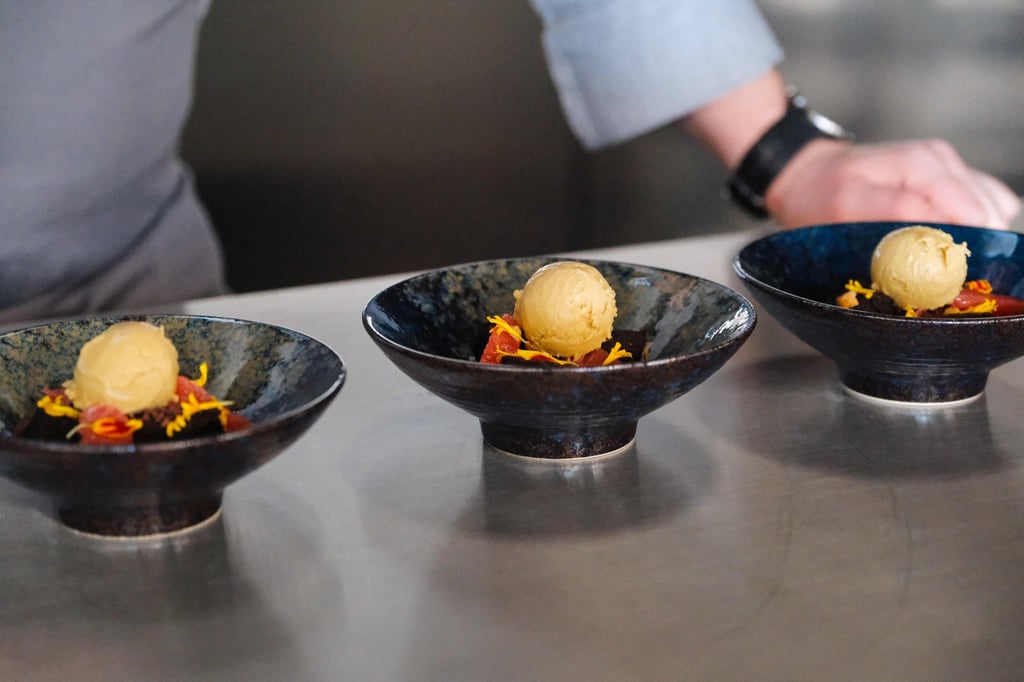Finland Just Created Protein From Air — A Revolutionary Food Breakthrough With No Farms, Animals, or Soil
In a small lab outside Helsinki, Finland, a team of scientists has developed a food production method that could redefine how humanity thinks about nutrition. Without needing farmland, livestock, or even plants, Finnish researchers have successfully created edible protein using only air, water, carbon dioxide, and renewable electricity. This astonishing breakthrough—termed solar fermentation—may hold the key to a future where food insecurity is a thing of the past.

At the heart of this innovation lies a group of hydrogen-oxidizing microbes. These microscopic organisms are specially designed to feed on inputs that are available almost everywhere on Earth: CO₂ from the atmosphere, H₂ generated by splitting water, and a controlled amount of electricity, preferably harvested from solar or wind energy. These microbes consume the nutrients produced during this reaction and multiply rapidly, forming a golden biomass that is 65% pure protein—on par with, or even exceeding, traditional protein sources like soy or eggs.
But what makes this process truly extraordinary is not just its efficiency or nutritional content. It is the fact that no animals, plants, or arable land are involved. Unlike lab-grown meat, which still relies on animal cells and complex biocultures, solar fermentation is entirely post-biological. That means it does not require any living plant or animal source to begin with. The entire system can be operated in compact bioreactors—small enough to fit inside a shipping container—making it portable and adaptable to virtually any environment on the planet.
Whether it’s the drought-ridden plains of Africa, the icy landscapes of Antarctica, or even the isolated environments of a space station, solar fermentation opens the door to decentralized, sustainable food production like never before. Its low environmental impact is staggering: it uses just 1% of the water and land needed for traditional farming and emits next to no greenhouse gases. This innovation could dramatically lower the ecological footprint of feeding billions.
The final product is a light, golden powder rich in amino acids, fiber, and essential vitamins. It has a neutral flavor, which means it can be easily incorporated into existing food systems—blended into bread, added to pasta, or shaped into meat-like alternatives. The Finnish team envisions it being used not only in future-ready vegan meals but also in emergency rations, space missions, and humanitarian relief operations.
What once seemed like science fiction is now inching closer to reality. Production units are already yielding over a kilogram of this protein powder per day. The European Union has granted clearance for it to enter early-stage commercial testing in specific contexts—such as disaster relief kits, refugee nutrition programs, and astronaut food.
Beyond its practical applications, this breakthrough represents a philosophical turning point. For centuries, humanity has depended on the cycles of agriculture and livestock to sustain itself. But this new form of food production untethers us from the soil, from the weather, and from the ethical and environmental costs of animal farming. It invites us to ask a deeper question: What does it truly mean to produce food?
In a time when climate change, water scarcity, and deforestation are straining our ability to grow crops and raise animals, Finland’s innovation is more than just clever science—it is a lifeline. It’s a glimpse into a world where food is not bound by geography or politics, but powered by nature’s most abundant and renewable forces: air, water, and light.
If this technology scales successfully—and early results are promising—it could help solve some of the world’s most pressing challenges: from hunger and malnutrition to environmental collapse. By producing protein anywhere the sun shines, we may finally have a path toward resilient, ethical, and scalable nutrition for all.
This is not just a new way to eat. It’s a new way to live.